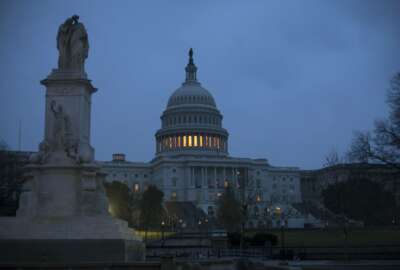
2019 pay raise — What are the odds, who would be the winners?
If the surprise pay raise approved by the Senate makes it through the White House, what would it put in your wallet? We're looking at what’s happening and not...
If the surprise pay raise approved by the Senate makes it through the House and then the White House, what would it put in your wallet? Odds are the 1.9 percent, including both regular and locality pay, would be divided up pretty much as was the 1.9 percent raise that white collar feds got in January.
The only difference is that President Donald Trump proposed — as in didn’t oppose — the 2018 raise. This time he’s asked for a pay-for-performance fund to better reward outstanding performance. He said it would be less costly than a permanent across-the-board raise for all workers, and make it easier for Uncle Sam to recruit and retain the best.
The administration will make its next call on the 2019 pay issue at the end of this month. The House has not approved a federal pay raise, but something could be worked out when Senate-House conferees meet to iron out appropriations before and after the midterm elections. Under both Democrats and Republicans, Congress has an abysmal, decades-long history of not completing work on all 12 major appropriations bills. Senate Majority Leader Mitch McConnell (R-Ky.) said he hopes to have nine of the 12 finished by Labor Day.
So if there is a 2019 pay raise and if it likely follows the 2018 distribution pattern, feds in San Francisco-San Jose could expect something around 2.21 percent more, the Washington-Baltimore area could expect 2.2 percent, and Boston and Houston could both see 2 percent. Los Angeles-area feds might receive 2.12 percent more, in Philadelphia 1.99 percent, 1.91 percent for Richmond, Virginia; for St. Louis, 1.96 percent; and 1.9 percent more for Chicago-area feds. White collar feds who are not part of a locality zone would be looking at something like 1.67 percent more, if there is a 2019 pay raise and if it followed this year’s pattern.
A few months ago, nobody was talking about an Oct. 1 shutdown. Now that the president has raised the threat level the question is whether there is going to be one and if so, how long could it last. Will Congress and the White House work out a face-saving compromise on funding parts of the U.S.-Mexico border wall or will there be a shutdown four weeks before the upcoming midterm elections?
Today on our Your Turn radio show we’re going to look at what’s happening and not happening with pay, shutdowns and appropriations on Capitol Hill. I will talk with Federal News Radio reporter Nicole Ogrysko and ask her about the timetable for major changes in the Thrift Savings Plan program. Later on we will check in with her fellow reporter Jory Heckman about the status of inspectors general in the federal government.
Your Turn airs at 10 a.m. EDT at www.federalnewsradio.com or on 1500 AM in the D.C. area. Shows are archived on our home page so you can listen at your pleasure.
Nearly Useless Factoid
By: Amelia Brust
During the mid-19th century in Denmark, it was more common for people to identify themselves using patronymics than with actual surnames. Patronymics combine the father’s first name and either “sen” (son) or “datter” (daughter). For example, a man with the first name Peter whose father was named Hans would be called “Peter Hansen;” his sister Anna would be called “Anna Hansdatter.” The Danish government outlawed patronymics in the 1820s and today, the most popular Danish surnames all end in “sen.”
Source: Visit Denmark
Copyright © 2025 Federal News Network. All rights reserved. This website is not intended for users located within the European Economic Area.
Mike Causey is senior correspondent for Federal News Network and writes his daily Federal Report column on federal employees’ pay, benefits and retirement.
Follow @mcauseyWFED





